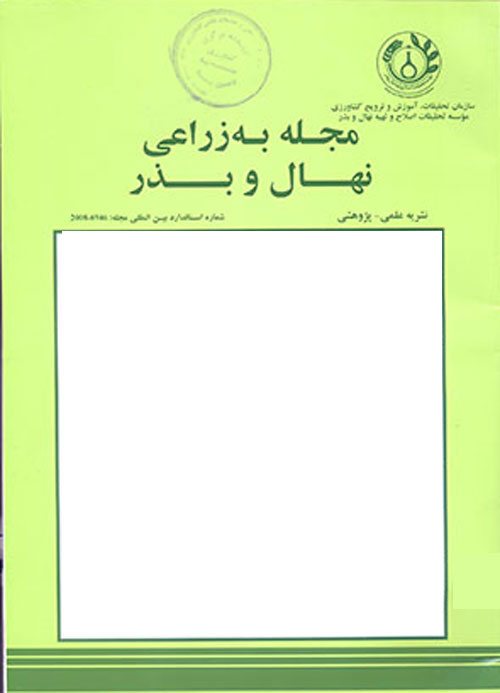Histology of Oxidative Stress and Generation of Reactive Oxygen Species Against Progress of Fire Blight Causal Agent in Pear Cultivars
Author(s):
Article Type:
Research/Original Article (دارای رتبه معتبر)
Abstract:
Resistance to fire blight disease in pears appears as slow disease progress in moderately resistant and sharp prevention of disease progress in resistant cultivars. Regarding to the importance and dual roles of reactive oxygen species (ROS), especially superoxide (O2-), hydrogen peroxide (H2O2) and hydroxyl (OH-) in disease development and defense against its progress, in this research, generation of these species of active oxygen were studied in pear cultivars Dar Gazi (resistant), Harrow Sweet (moderately resistant) and Williams (susceptible) after inoculation with Erwinia amylovora in in vitro conditions. The necrosis progress rates in in vitro shootlets were according to the disease susceptibility of cultivars and were comparable with the greenhouse results. For all species of active oxygen, first traces was observed in central cylinder of the in vitro shootlets in vertical direction, followed by horizontal expansion of active oxygen species in stem parenchyma. Two indices of velocity and severity of each singular active oxygen species were correspondence. Comparison of superoxide generation showed similar rates in all tested cultivars, while based on the deterrent role of H2O2 on disease progress, H2O2 generation in cultivar Harrow Sweet was earlier and higher than other cultivars. In pear cultivar Dar Gazi, H2O2 generation was postponed up to 96h after inoculation. According to the results, it seems that pear cultivars use different strategies for defense against fire blight invasion.
Keywords:
Language:
Persian
Published:
Seed and Plant Production Journal, Volume:33 Issue: 2, 2018
Pages:
139 to 162
https://www.magiran.com/p1831757


